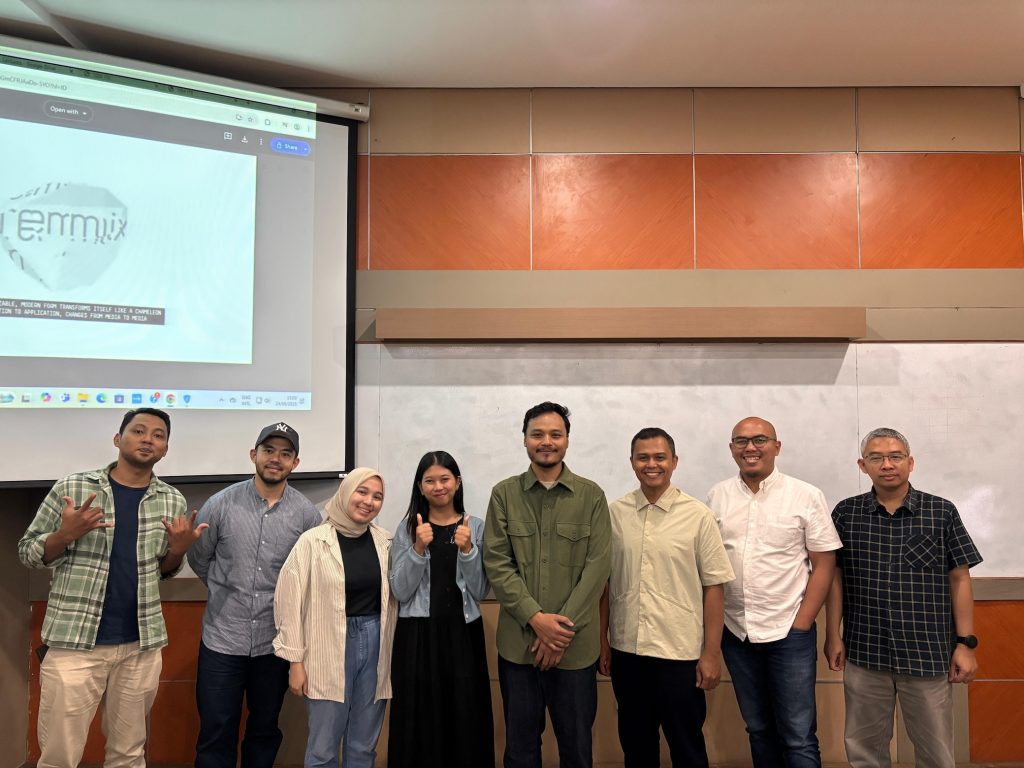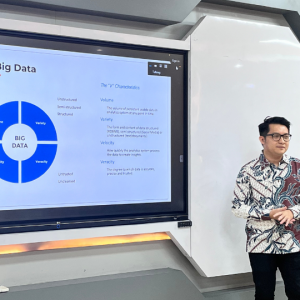Branding is more than just logos or marketing. It is a strategic force that shapes how consumers perceive, connect with, and remain loyal to a product or service. This was the key insight delivered by Riky A. Siswanto, a lecturer in Visual Communication Studies at Telkom University, during a guest lecture at the SBM ITB, on Saturday (24/5).
Carrying the theme “Design as Strategy: Rethinking Branding for the MBA Mindset,” the session explored how branding extends beyond visuals to influence consumer behavior on a deeper, emotional level.
“Branding and marketing are often seen as the same, but they’re different. Marketing finds its purpose through branding, and branding finds its voice through marketing,” Riky explained.
He highlighted how logos play a significant role in triggering brand recognition, but real branding extends far beyond visuals. A strong brand dominates the mental space of consumers, creating subconscious associations, emotional connections, and loyalty.
To understand branding, Riky emphasized the importance of distinguishing between brand identity and brand equity. Brand identity refers to tangible elements, such as logos, colors, packaging, and even sensory aspects like taste or aroma, which are especially relevant in the food and beverage industry. Brand equity, meanwhile, refers to the intangible value that consumers associate with a brand, encompassing how it is perceived, felt, and remembered.
“Coffee can be seen as a simple commodity. However, a well-known coffee shop sells more than just coffee; it offers an atmosphere, community, and a sense of belonging. That emotional connection is brand equity in action,” he said.
Although brand equity is difficult to measure, its impact is powerful. Successful brands understand their unique value and align it with market needs, cultivating distinct identities that set them apart. In today’s highly competitive market, differentiation lies not just in product features but in meaning.
Riky noted that the definition of products has evolved, no longer limited to physical goods. Products can now be services (like Netflix), experiences (like Disney), or ideas (like Tesla’s sustainability mission). This evolution requires brands to strike a balance between innovation and consistency, while remaining true to their core identity.
Design, according to Riky, is not just about aesthetics; it is a strategic tool for shaping identity and market appeal. A well-crafted visual language, when applied with intention, can transform a brand from ordinary to iconic.
“In a world where consumers are bombarded with choices, branding isn’t just part of the strategy, it is the strategy,” Riky concluded. “And design is the most powerful way to execute it. Brands that thrive are those that master the interplay between perception, identity, and strategic design.”






